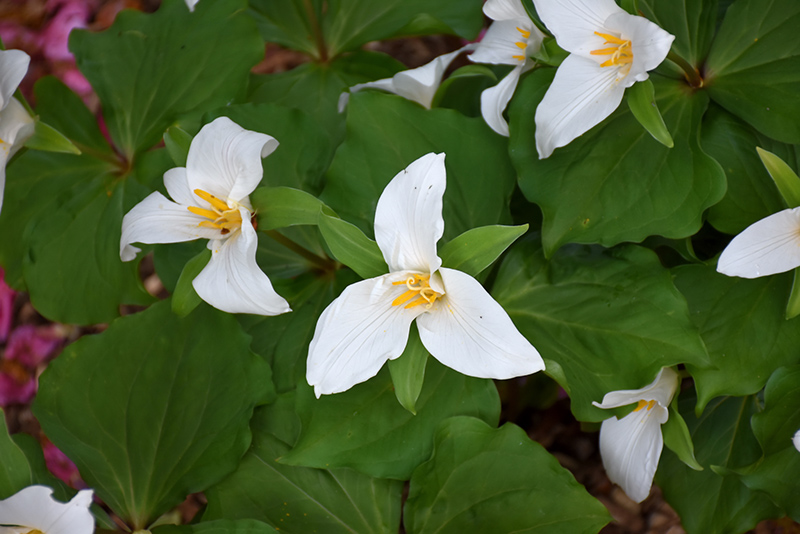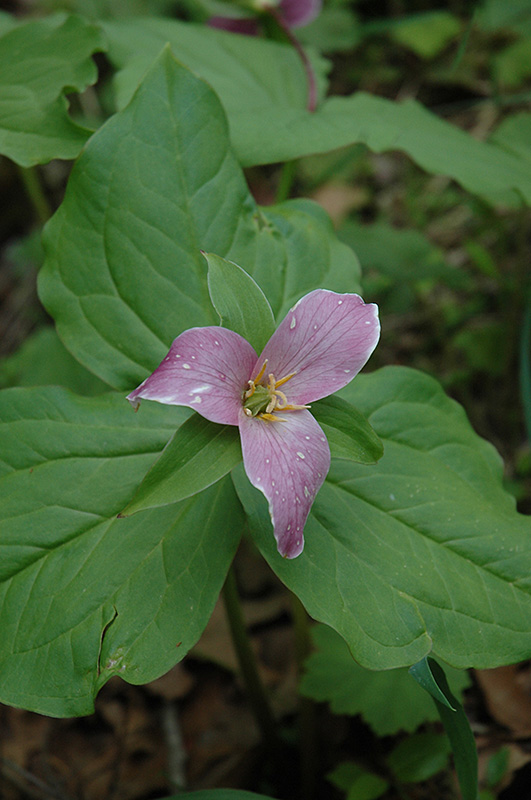The Plant Finder
Have a specific vision in mind for your outdoor space?
Search our database and find the perfect plants to meet your gardening needs.
Height: 10 inches
Spacing: 6 inches
Sunlight:
![]()
![]()
Hardiness Zone: 5a
Other Names: Western Wakerobin, Trinity Flower
Description:
A beautiful western native clump forming perennial with elegant forest green leaves appearing in triads; so to are the flowers, pure white and slightly ruffled, fading to soft pink as they age; an outstanding woodland plant in a shady garden or border
Ornamental Features
Western Trillium features delicate lightly-scented white star-shaped flowers with yellow eyes at the ends of the stems from mid to late spring. Its pointy leaves remain forest green in colour throughout the season.
Landscape Attributes
Western Trillium is an open herbaceous perennial with an upright spreading habit of growth. Its relatively fine texture sets it apart from other garden plants with less refined foliage.
This is a relatively low maintenance plant, and should not require much pruning, except when necessary, such as to remove dieback. It has no significant negative characteristics.
Western Trillium is recommended for the following landscape applications;
- General Garden Use
- Naturalizing And Woodland Gardens
Planting & Growing
Western Trillium will grow to be about 8 inches tall at maturity, with a spread of 8 inches. When grown in masses or used as a bedding plant, individual plants should be spaced approximately 6 inches apart. Its foliage tends to remain low and dense right to the ground. It grows at a slow rate, and under ideal conditions can be expected to live for approximately 10 years. As an herbaceous perennial, this plant will usually die back to the crown each winter, and will regrow from the base each spring. Be careful not to disturb the crown in late winter when it may not be readily seen! As this plant tends to go dormant in summer, it is best interplanted with late-season bloomers to hide the dying foliage.
This plant does best in partial shade to shade. It prefers to grow in average to moist conditions, and shouldn't be allowed to dry out. It is not particular as to soil pH, but grows best in rich soils. It is quite intolerant of urban pollution, therefore inner city or urban streetside plantings are best avoided, and will benefit from being planted in a relatively sheltered location. Consider applying a thick mulch around the root zone in both summer and winter to conserve soil moisture and protect it in exposed locations or colder microclimates. This species is native to parts of North America. It can be propagated by division.


